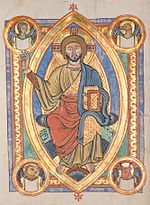
Stigmata, in Catholicism, are bodily wounds, scars and pain which appear in locations corresponding to the crucifixion wounds of Jesus Christ: the hands, wrists, feet, near the heart, the head, and back.

The epiclesis refers to the invocation of one or several gods. In ancient Greek religion, the epiclesis was the epithet used as the surname given to a deity in religious contexts. The term was borrowed into the Christian tradition, where it designates the part of the Anaphora by which the priest invokes the Holy Spirit upon the Eucharistic bread and wine in some Christian churches. In most Eastern Christian traditions, the Epiclesis comes after the Anamnesis ; in the Western Rite it usually precedes. In the historic practice of the Western Christian Churches, the consecration is effected at the Words of Institution though during the rise of the Liturgical Movement, many denominations introduced an explicit epiclesis in their liturgies.

Pio of Pietrelcina, widely known as Padre Pio, was an Italian Capuchin friar, priest, stigmatist, and mystic. He is venerated as a saint in the Catholic Church, celebrated on 23 September.
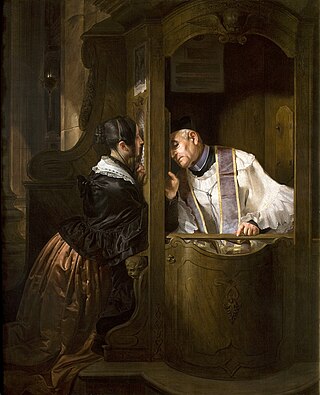
Absolution is a theological term for the forgiveness imparted by ordained Christian priests and experienced by Christian penitents. It is a universal feature of the historic churches of Christendom, although the theology and the practice of absolution vary between Christian denominations.
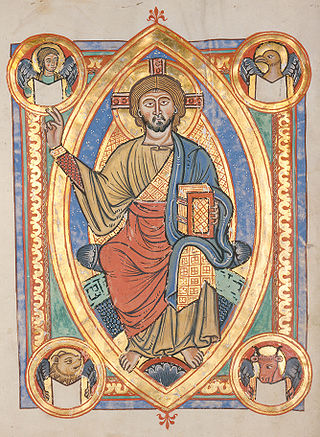
The prayer before a crucifix is a Roman Catholic prayer to Jesus. It is often said by Roman Catholics after Communion or after Mass. The faithful receive a partial indulgence if they recite the prayer after Communion before a crucifix. On the Fridays of Lent, the indulgence is a plenary indulgence.

In Catholicism, the morning offering is a prayer said by an individual at the start of the day in order to consecrate oneself to Jesus Christ. The practice has traditionally been associated with the Apostleship of Prayer. While since 1929 the Pope has added a general and a mission intention to the traditional morning offering prayer each month, Pope Francis has restored this to the original, single monthly intention. Over time other forms of the morning offering prayer have been suggested.
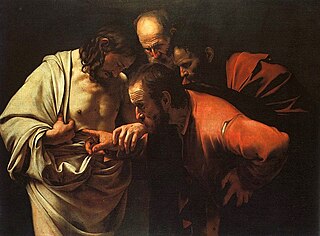
A number of people have claimed to have had visions of Jesus Christ and personal conversations with him. Some people make similar claims regarding his mother, Mary. Discussions about the authenticity of these visions have often invited controversy. The Catholic Church endorses a fraction of these claims, and various visionaries it accepts have achieved beatification, or even sainthood.

The Blessing of the Throats is a sacramental of the Roman Catholic Church, ordinarily celebrated on February 3, the feast day of Saint Blaise of Sebaste. It is also celebrated in some of the Eastern Catholic Churches, and in parishes of the Anglican Communion on the same day as a commemoration.

The Holy Face of Jesus is a title for specific images which some Catholics believe to be miraculously formed representations of the face of Jesus Christ. The image obtained from the Shroud of Turin is associated with a specific medal worn by some Roman Catholics and is also one of the Catholic devotions to Christ.

Thanksgiving after Communion is a spiritual practice among Christians who believe in the Real Presence of Jesus Christ in the Communion bread, maintaining themselves in prayer for some time to thank God and especially listening in their hearts for guidance from their Divine guest. This practice was and is highly recommended by saints, theologians, and Doctors of the Church.

Vesting prayers are prayers which are spoken while a cleric puts on vestments as part of a liturgy, in both the Eastern and Western churches. They feature as part of the liturgy in question itself, and take place either before or after a liturgical procession or entrance to the sanctuary, as depends on the particular liturgical rite or use which is being observed.

Catholic tradition and Mariology include specific prayers and devotions as acts of reparation for insults and blasphemies against Mary, mother of Jesus, often known as the Blessed Virgin Mary to Catholics. Similar prayers as Acts of Reparation to Jesus Christ and Acts of Reparation to The Holy Trinity also exist.
The usual beginning is the series of prayers with which most divine services begin in the Eastern Orthodox Church and those Eastern Catholic Churches which follow the Byzantine Rite.
The Roman Catholic Church has often held mortification of the flesh, as a worthy spiritual discipline. The practice is rooted in the Bible: in the asceticism of the Old and New Testament saints, and in its theology, such as the remark by Saint Paul, in his Epistle to the Romans, where he states: "If you live a life of nature, you are marked out for death; if you mortify the ways of nature through the power of the Spirit, you will have life.". It is intimately connected with Christ's complete sacrifice of himself on the Cross: "those who belong to Christ have crucified nature, with all its passions, all its impulses". Christ himself enjoined his disciples to mortify themselves when he said: "If any man would come after me, let him deny himself and take up his cross and follow me". According to the Catechism of the Catholic Church, "[t]he way of perfection passes by way of the Cross. There is no holiness without renunciation and spiritual battle. Spiritual progress entails the ascesis and mortification that gradually lead to living in the peace and joy of the Beatitudes: ‘He who climbs never stops going from beginning to beginning, through beginnings that have no end. He never stops desiring what he already knows.’". The purpose of mortification is to train "the soul to virtuous and holy living". It achieves this through conforming one's passions to reason and faith. According to the Catholic Encyclopedia, internal mortification, such as the struggle against pride and self-love, is essential, but external mortification, such as fasting can also be good if they conform with a spirit of internal mortification.

A number of prayers to Jesus Christ exist within the Roman Catholic tradition. These prayers have diverse origins and forms. Some were attributed to visions of saints, others were handed down by tradition.

Saint Louis de Montfort's Prayer to Jesus is a reflection of his philosophy of "total consecration to Jesus Christ through Mary", a theme that centuries later influenced the development of Roman Catholic Mariology.

Spiritual communion is a Christian practice of desiring union with Jesus Christ in the Eucharist. It is used as a preparation for Mass and by individuals who cannot receive Holy Communion.

The Parish and National Shrine of Saint Padre Pio, commonly known as Padre Pio Shrine, is a Roman Catholic parish church and pilgrimage site situated along Governor Antonio Carpio Avenue in Barangay San Pedro, Santo Tomas, Batangas, Philippines. It is consecrated to the Italian Saint Pio of Pietrelcina.
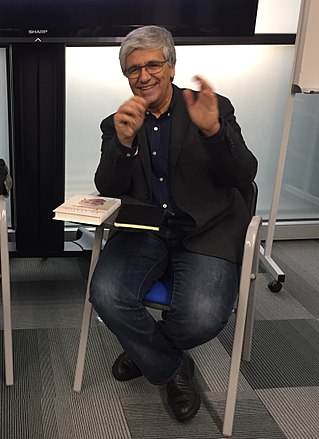
Andrea Tornielli is an Italian Catholic journalist and religious writer who serves as the editorial manager for the Vatican's Dicastery for Communication.

The First Thursdays Devotion, also called the Act of Reparation to the Wounds of Jesus and to the Holy Eucharist, is a Catholic devotion to offer acts of reparation.
